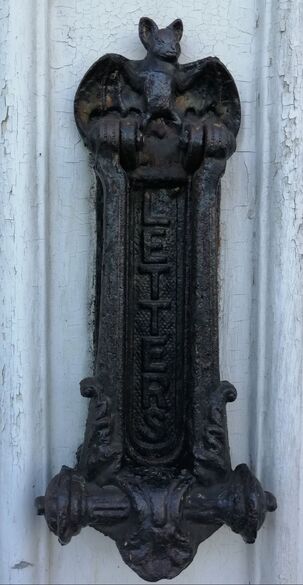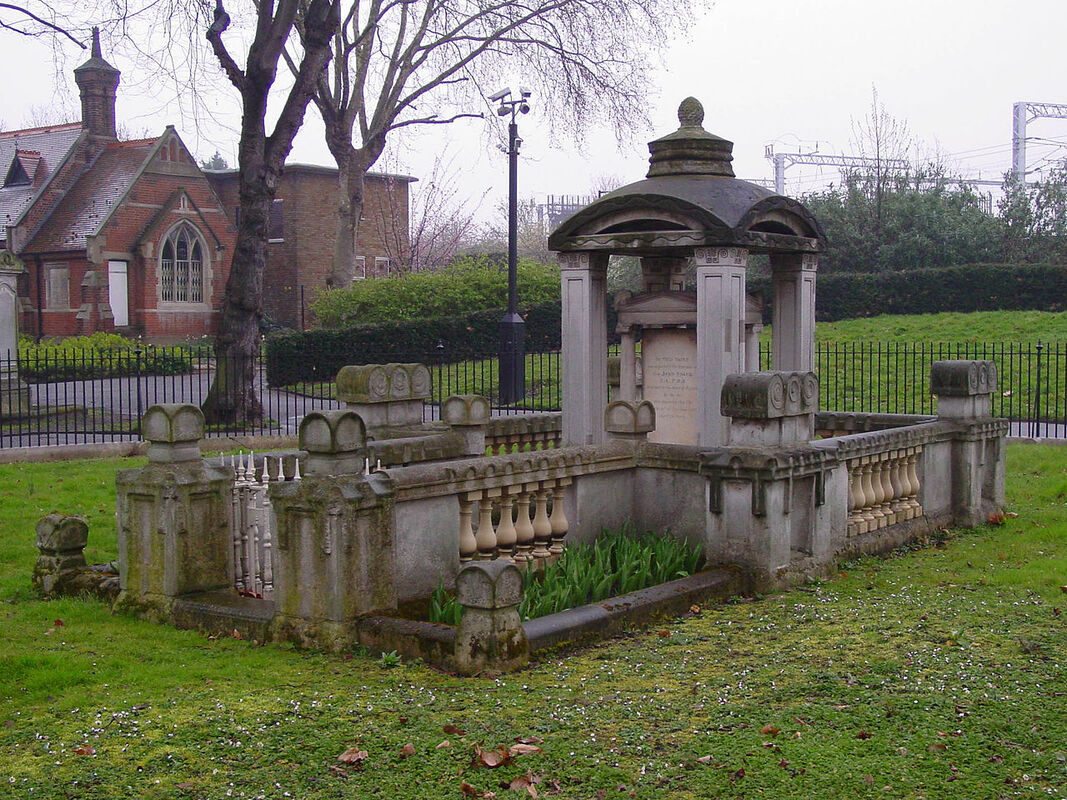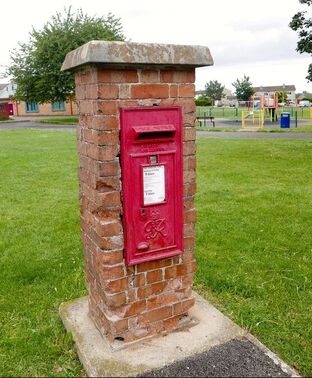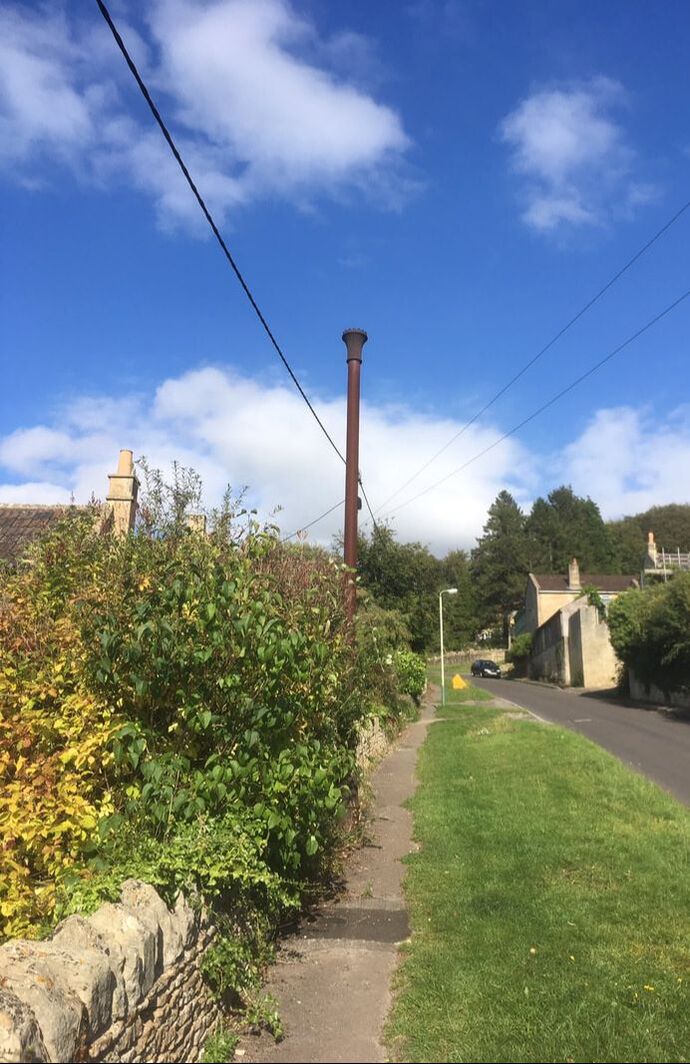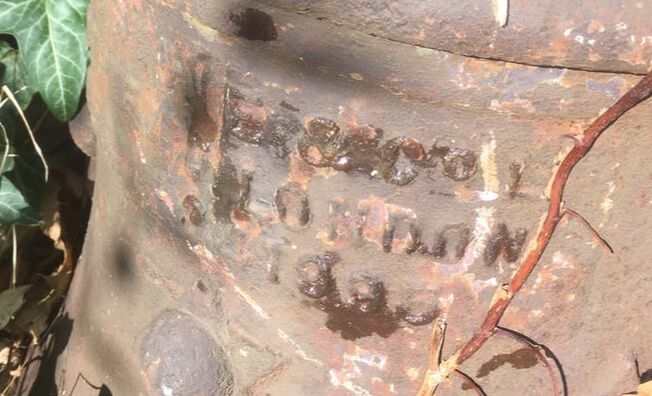Street Furniture Additions Various Contributors September 2019
|
Bats Everywhere? There is a follow-up to the article about the bat letterboxes in the Central Cottages built by Bath & Portland Stone Firms at High Street, Fairmead View and Mill Lane,. We have had other reported sightings in the village on old front doors. Some, like the one spotted right, are looking well-used and rather elderly creatures, obviously originals. It does raise questions about whether the bat design was chosen as interesting in its own right or if bats were already in evidence in the stone workings and a common sight to local people. And where did the letterboxes come from? If anyone needs a replacement, we are told they can be purchased from A Kenrick & Sons of West Bromwich via [email protected] The firm was started in 1791 by Archibald Kenrick, originally a buckle-maker and one of the great Industrial Age iron foundry innovators.[1] It is possible that his firm have made this design since they began producing door accessories in the early years. Were they readily available in the village itself, perhaps sold by Bence’s Stores (now Benson House) at the corner of the Market Place, near The Chequers? Can anyone help solve this problem which is driving us all batty? |
|
Inspiration for K2 Phone Box Simone Fish July 2019 I am always amazed at people's knowledge and interest in structures around them. An example of this came from Simone who wrote about a sightseeing trip she had in London: I was in London recently and saw this monument by John Soanes. It would appear that he was the man who inspired the design of the telephone kiosk. If you are ever in London, it’s in the area called Old St Pancras Churchyard, also known as St Pancras Gardens. |
Nikolaus Pevsner described the importance of the structure:
The understated classicism of the design is widely seen as one of Soane's most inventive creations and the central domed structure influenced Sir Giles Gilbert Scott's design of the K2 and subsequent telephone kiosks. It is one of only two Grade I listed monuments in London (the other being Karl Marx's tomb in Highgate).
Well, did you know that? As important as Karl Marx's tomb?
The understated classicism of the design is widely seen as one of Soane's most inventive creations and the central domed structure influenced Sir Giles Gilbert Scott's design of the K2 and subsequent telephone kiosks. It is one of only two Grade I listed monuments in London (the other being Karl Marx's tomb in Highgate).
Well, did you know that? As important as Karl Marx's tomb?
|
Rudloe's Old Post Box
It has been pointed out to me that Rudloe has a very old post box. With an insignia of George VI, the box could have been installed any time between 1936 and 1952 but we can speculated to define its age even better. The box is unusually built in a brick pedestal (very rare in the village) and the fitting appears damaged and not necessarily original. The suggestion remains that the box dates from the Second World War and probably was situated nearer to the prefab houses than on Rudloe Green as at present. Does anyone have more details? Photo Right of Rudloe box: courtesy Carol Payne |
|
Above and Right: The inscription appears to say 1995 but perhaps rusting of the post has obscured the actual date of 1885?
Views anyone? (Photos courtesy Carol Payne) |
Historic Pipe on Quarry Hill - or is it? Have you noticed the old, rusty post half way up Quarry Hill? It stands out as an anomaly to all other lamp posts in the area, indeed in the whole of the village. We know that gas-powered street lighting came earlier than domestic gas supply in the centre of Box. The first public utility, the Gas Light and Coke Company of London, started manufacturing town gas from coal in the early 1800s and was the main source of street lighting before the advent of electricity supply after 1880. The Bath Gas Light and Coke Company was formed in 1815 and became the local manufacturer. The nationalisation of the UK gas industry in May 1949 merged over 1,000 privately-owned companies into 12 area gas boards and ended the independence of the Bath company. The discovery of natural gas in the North Sea in 1967 changed everything and domestic gas supplies expanded. And why is there doubt about the age of the rusty post, seen left? Look at the date on the bottom of the post below. |
References
[1] https://www.gracesguide.co.uk/Archibald_Kenrick_and_Co
[1] https://www.gracesguide.co.uk/Archibald_Kenrick_and_Co
